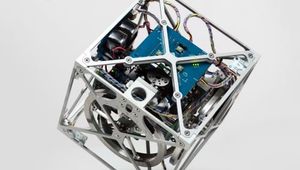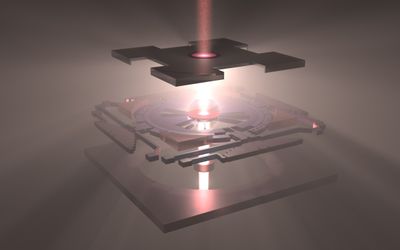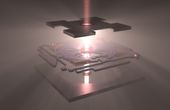FTIR engine FT-NIR spectrometer
Compact Near-infrared Fourier Transform Spectrometer
General
| Product Type | Fourier Transform Spectrometer |
| Applications | Bioprocess Analysis, Plastic Sorting, Food Inspection, Process Analytical Technology (PAT) |
| Key Features | Built-in Multiple Lamps, High Detection Efficiency, Wide Wavelength Range, 7000 hr life (average) |
Technical Specifications
| Light Input Method | Optical Fibre Input with SMA Connector |
| Operating Temperature | 5 to 50 degrees Celsius |
| Supply Voltage | 12 V or 24 V Recommended |
| Wavelength Range | 1100 nm to 2500 nm |
| Measurement Speed | 275 fps |
| Wavelength Resolution | 5.7 micrometers typ. |
| Signal to Noise Ratio | 10000 |
| Photodetector | InGaAs PIN Photodiode |
| Interface | Ethernet |
| Weight | 580 g Approx. |
| Dimensions | 68 x 124 x 66 mm |
Overview
The C16511-01 FTIR engine integrates a Michelson interferometer and control, enabling spectral and absorbance measurements via Ethernet to a PC. This facilitates portable FTIR spectrophotometer development for on-site chemical and agricultural analysis, extending lab spectroscopy to field use.
The miniaturized Fourier Transform Infrared Spectrometer C16511-01 (FTIR) engine features a palm-sized enclosure. It integrates a Michelson optical interferometer and control circuitry, facilitating spectral and absorbance measurements through Ethernet connectivity to a personal computer. This technology allows the prototyping and development of portable, handheld FTIR spectrophotometers for analytical applications. These applications include real-time chemical monitoring in industrial production and compositional analysis of agricultural products. Hence, it extends the capabilities of laboratory-based spectroscopy to field and process environments.
Spectral Response Range Suited for Remote Sensing and Spectroscopy
The C16511-01 FTIR Engine features a spectral response range of 1100 to 2500 nm, operating within the near-infrared (NIR) region, making it suitable for applications such as remote sensing, material identification, industrial process monitoring, and spectroscopy.
Specifically, its spectral response range is particularly relevant for applications involving moisture detection and the analysis of organic materials, which often exhibit unique spectral signatures in the NIR region.
Sophisticated Design for Signal Acquisition and Analysis
The FTIR Engine offers a compact yet sophisticated design. The light input typically comes from an optical fiber and is divided by a beam splitter. Half of the light is directed towards a fixed mirror, while the other half is reflected by a MEMS movable mirror. When the two beams are recombined, an interference signal is generated and measured by an InGaAs PIN photodiode. Additionally, the FTIR Engine C16511- 01 is equipped with a VCSEL and a Si Photodiode, which precisely track the MEMS mirror position for accurate spectrum reconstruction.
To extract the information about the sample absorbance characteristics, the interference signal is internally processed using an FFT algorithm to obtain the final spectrum, which is transmitted to a PC using Ethernet communication.
This process enables higher communication speed and robustness compared to the previous version of this device.
Evaluation Software for Analysis and Reporting
The FTIR Engine comes with dedicated evaluation software compatible with Windows 10 and Windows 11 operating systems. The software features an intuitive user interface and allows testers to:
Acquire and save data from sensors
Perform basic arithmetic operations while measuring data
Configure measurement conditions
Generate graphs from acquired data
Compare measured data against reference data
Acquire spectrometer information such as serial number, spectral response range, type no, etc.
Moreover, the dynamic link library (DLL) allows users to create their own measurement software programs.
References
Recommended Specs
Continue Reading
Bound states in the continuum (BICs) are at the basis of ultra-sensitive sensors, compact optical devices, and optical computers. In this article, Zarina Kondratenko, a senior researcher at ITMO’s Faculty of Physics, unravels the conundrum and shares ongoing projects in the field by ITMO researchers










